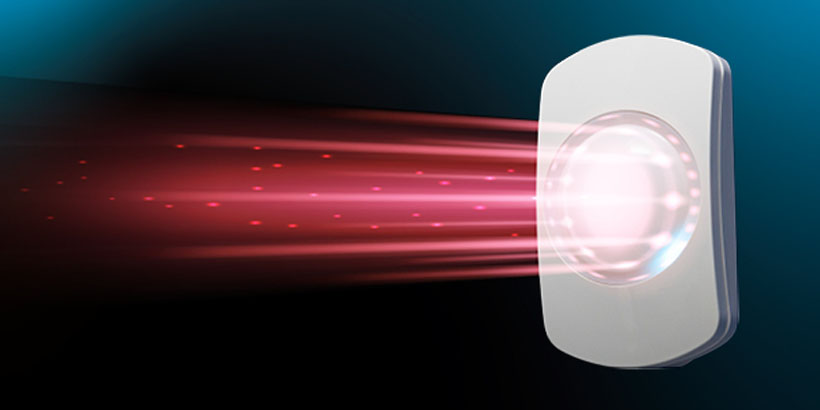
Installers and integrators working with intruder alarm systems will be aware of the Grading system set out in BS EN 50131-1. The Grading approach allows alarm systems to be categorised based upon the level of threat they are likely to face. It is important to remember that the lowest Grade device used sets the level for the entire system. Therefore, a system using Grade 3 components, but which has one Grade 2 device, can only achieve Grade 2. It is therefore important that all devices meet Grade 3, including all detectors.
Grade 3 detectors are required to be able to signal masking attempts. Anti-masking technology is used to detect any attempts to mask the lens of the detector while the system is unset. Masking maybe due to a deliberate attempt to block the field of view, thus allowing intruders to go undetected when the system is set. Alternatively, detectors can be masked accidentally; for example, boxes in a warehouse might be stacked in the front of the device, preventing it from operating correctly.
When a masking attempt is detected, a masking fault signal is sent to the control panel. As a result, the system cannot be set until the masking fault is cleared. This ensures the system operates as expected whenever it is set.
Masking takes many forms. Deliberate masking attempts can include the detector lens being covered with various materials to prevent the detection of infrared activity, or might include spraying or painting the lens to prevent correct operation. Covering a detector lens while the system is unset is a rare occurrence but is addressed because Grade 3 is specified for medium to high-risk sites, where ‘intruders are expected to be conversant with the alarm system and have a comprehensive range of tools and portable electronic equipment’.
When detecting masking, there are two technologies which can be used. The first, microwave, uses the doppler effect to detect the presence of a mask. It does this by creating a microwave bubble in front of the detector unit. Microwave detection does detect masking and is a common approach as it is a relatively low-cost implementation for manufacturers. However, microwave isn’t always consistent when used close to the source. This can result in missed masking attempts, especially if the intruder uses one of the more subtle masking methods.
The other technology is active infrared detection. This is more accurate and detects most masking attempts. It carries a higher cost for manufacturers but can be susceptible to white light interference.
To deliver the best level of anti-mask detection, Texecom’s new Capture Grade 3 detectors use a combination of active IR using a transmitter and receiver pair, and microwave detection when sensing masking attempts. This ensures high levels of accuracy without the false alarms which can occur when the individual technologies are used alone.







